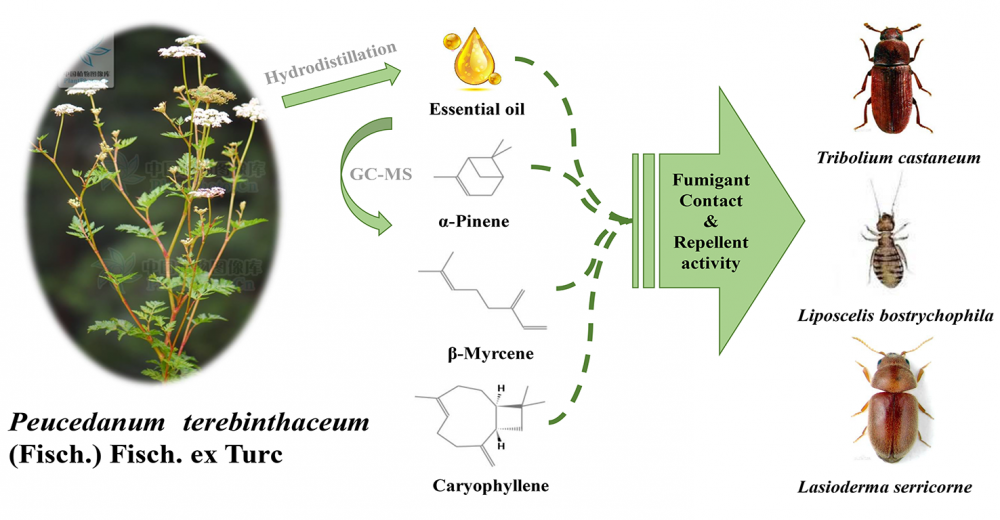JOURNAL 1287
Records of Natural Products
Year: 2020 Issue: 3 May-June
p.177 - 189
Viewed 3290 times.
-
Jiansheng Sun Sun

-
Yixi Feng

-
Yang Wang

-
Jigang Li

-
Kexing Zou

-
Hong Liu

-
Yichao Hu

-
Yun Xue

-
Longyan Yang

-
Shushan Du

-
Yan Wu

GRAPHICAL ABSTRACT

ABSTRACT
The aim of this work was to evaluate the bioactivities of Peucedanum terebinthaceum (Fisch.) Fisch. ex Turcz. essential oil and its three second rich constituents against Tribolium castaneum Herbst, Lasioderma serricorne Fabricius and Liposcelis bostrychophila Badonnel. The essential oil from aerial part of P. terebinthaceum was obtained by hydrodistillation and analyzed by gas chromatography-mass spectrometry. Thirty-three constituents were confirmed by GC-MS, which accounting for 91.5% of the total oil. The principal constituents included β-thujene (21.4%), β-terpinene (11.8%), germacrene D (9.4%) and dihydro-cis-α-copaene-8-ol (8.0%). Besides, β-myrcene (6.2%), Linalyl isovalerate (4.3%), α-pinene (4.0%), caryophyllene (3.6%), (Z)-α-farnesene (3.6%) and β-elemene (3.0%) were also detected in relatively lower content. The essential oil possessed promising potential in pest control, as it showed strong contact toxicity and repellent effects on T. castaneum and L. serricorne. Three major constituents α-pinene, caryophyllene and β-myrcene were toxic to three insect species in contact assays and showed repellent effects on T. castaneum and L. bostrychophila. This work revealed the insecticidal capacity of P. terebinthaceum and would provide some information for the development of new strategies in the control of insect pests.
KEYWORDS- Fumigant toxicity
- Contact toxicity
- Tribolium castaneum Herbst
- Lasioderma serricorne Fabricius
- Liposcelis bostrychophila Badonnel